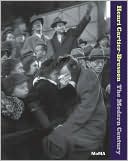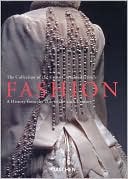Graphic Design History: A Critical Guide
Graphic Design History traces the social and cultural role of visual communication from prehistory to the present, connecting what designers do every day to a history of innovative graphic forms and effects. It offers a unique and exciting set of critical lenses for thinking about the cultural purpose and historical dimensions of the graphic designer’s work, placing emphasis on the relevance of the history to the practices of designers today. Designed by the authors, the book is beautiful,...
Search in google:
Graphic Design History traces the social and cultural role of visual communication from prehistory to the present, connecting what designers do every day to a history of innovative graphic forms and effects. It offers a unique and exciting set of critical lenses for thinking about the cultural purpose and historical dimensions of the graphic designer’s work, placing emphasis on the relevance of the history to the practices of designers today. Designed by the authors, the book is beautiful, spacious, and elegant. Clearly organized into three content-rich layers, it is informative yet lively and driven by ideas that offer ways of thinking about graphic design from a wealth of historical examplesThe New York Times - Steven Heller…an excellent primer on type and typography…Although intended as a college textbook, this volume is rather elegantly written. For anyone interested in studying the continuum of printed communications—from logos to posters, from the political to the commercial, from early writing to digital design—Drucker, who has taught art history at Yale, and McVarish, who teaches at the California College of the Arts, provide detailed, often perceptive accounts of graphic design and its precursors.
AcknowledgmentsPrefaceIntroductionPrehistoric Prelude to Graphic Design 35,000—2700 bce 2Evolutionary foundations of communicationLanguage and designEarly graphic formsCommunicating ideas and beliefsThe invention of proto-writingConclusionTimelineTools of the tradeEarly Writing: Mark-making, Notation Systems, and Scripts 3000—500 bce 10Mark-makingNotationVarieties of early writingThe spread of writing as idea and scriptThe alphabetLiterate cultureConclusionTimelineTools of the tradeClassical Literacy 700 bce—400 ce 28Variations of literacy and the alphabetThe function of graphic codesModels of writing: gestural and constructedWriting at the end of the Classical ageConclusionTimelineTools of the tradeMedieval Letterforms and Book Formats 400—1450 44Medieval culture and graphic communicationGraphic media and contextsThe codex bookLetterforms, manuscript hands, and pattern booksGraphic forms of knowledgePublishing communities and graphic artsConclusionTimelineTools of the tradeRenaissance Design: Standardization and Modularization in Print 1450—1660 68Early print designGraphic communication in Renaissance culturePrint technology and type designGraphic forms of knowledgeConclusionTimelineTools of the tradeModern Typography and the Creation of the Public Sphere 1660—1800 94Printed matter and the public sphereNews books, broadsheets, and newspapersPolitics and the pressGraphic arts and designModern type designOn the edge of industrializationConclusionTimelineTools of the tradeThe Graphic Effects of Industrial Production 1800—1850 118Industrialization and visual cultureIllustrated papersBook design for mass productionPrinting imagesAdvertising design and typographyFine art and graphic artCritical issuesConclusionTimelineTools of the tradeMass Mediation 1850—1900s 140Printed mass mediaChanges in print technologyChanging patterns in the use of graphic mediaMedia networksGraphic design and advertisingPosters and public spaceConclusionTimelineTools of the tradeFormations of the Modern Movement 1880s—1910s 162Responses to industrialismArts and Crafts publicationsArts and Crafts disseminationArt NouveauJugendstilViennese designDecadence and AestheticismThe private press movement and modern designIntegration of design and industryConclusionTimelineTools of the tradeInnovation and Persuasion 1910—1930 186Visual culture and avant-garde designThe graphic impact of Futurism and DadaFrom experiment to principlesPropaganda and mass communication studiesGraphic persuasion and its effectsInstitutionalizing graphic designConclusionTimelineTools of the tradeThe Culture of Consumption 1920s—1930s 212Designing the modern lifestyleModern style in graphic designConsumer cultureThe professionConclusionTimelineTools of the tradePublic Interest Campaigns and Information Design 1930s—1950s 234Public interest and educationPhotojournalism and documentaryWartime propagandaWartime informationCommercial and technical uses of information designInformation analysis and design processConclusionTimelineTools of the tradeCorporate Identities and International Style 1950s—1970s 258Image and identity systemsInternational styleStyle, systems, and graphic design conceptsTechnologyThe professionConclusionTimelineTools of the tradePop and Protest 1960s—1970s 280Pop culture and styleSelf-conscious graphic designSlick surfaces and high production valuesCounterculture and the alternative pressRevolutionary culture and protestChanges in the professionCritical vocabularyConclusionTimelineTools of the tradePostmodernism in Design 1970s—1980s and Beyond 300Postmodern stylesPostmodern consumption and conservatismCritical theory and postmodern sensibilityPostmodernism and activismChanges in the professionConclusionTimelineTools of the tradeDigital Design After the 1970s 322Digital technology: from punch cards and plotters to desktop computingMedia transitions: type design and publicationsFluidity and functionalityThe myth of immateriality and challenges of digital designConclusionTimelineTools of the tradeGlossary 343CreditsBibliographyIndex
\ Steven Heller…an excellent primer on type and typography…Although intended as a college textbook, this volume is rather elegantly written. For anyone interested in studying the continuum of printed communications—from logos to posters, from the political to the commercial, from early writing to digital design—Drucker, who has taught art history at Yale, and McVarish, who teaches at the California College of the Arts, provide detailed, often perceptive accounts of graphic design and its precursors.\ —The New York Times\ \








